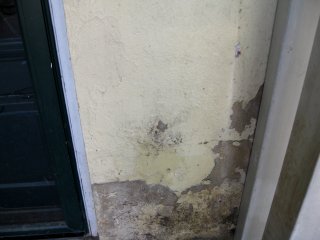
|
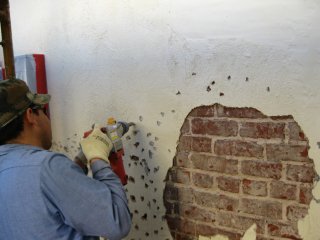
|
Old stucco has taken a beating. Peeling paint,
leaking flashing and years of sloppy patches justified a re-do.
|
Old stucco is stripped off.
|
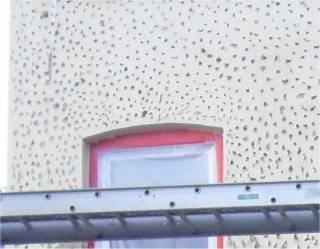
|

|
We chipped and recoated on the second floor wall
above the new roof. We didn't want to damage the new copper roof, and
the stucco was pretty solid.
For more on re-coating old stucco, please
click here.
|
Old patch from a window replacement was
torn out and bricked up. Someone used gutter guard for metal lath. I
have to hand it to them for their resourcefulness.
|
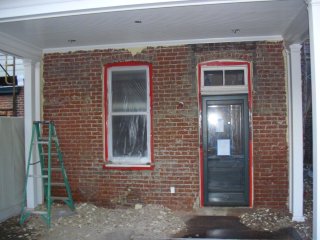
|

|
| The stucco under the porch stripped off. There was damage
from where someone had put a planter box against the wall, and from an
old porch roof leak. |
Here is a view of the scratch coat on the
old bricks.
We used an acrylic admixture in the scratch coat to ensure a good bond.
|
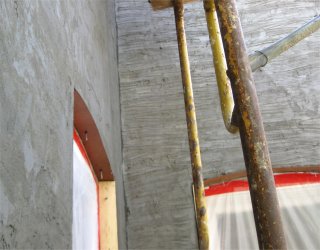
|
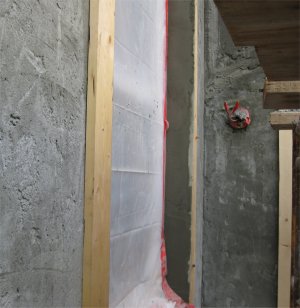
|
Arch window opening is made by using masonite
for the arch. The window returns (sides) are made by using straight one
by three's. Our brown coat is straightened in between the strips.
|
Returns are filled by reversing the strips after the brown
coat has set up overnight. The strips are setsquare to the window jamb.
|
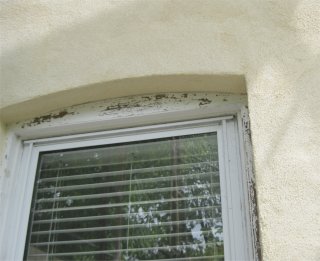
|

|
A view of the finished arch window.
|
The finish coat is made with white portland cement, lime, and
sandblasting sand. We use sandblasting sand a lot for the finish,
because of the grading-that is, the size varies from coarse down to a
fine powder for good crack resistence. California color from EXPO is
dry mixed in a
box. The finish is then mixed with a drill in buckets for good color
dispersion.
|
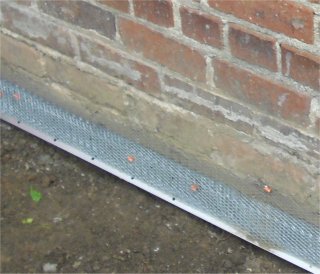
|
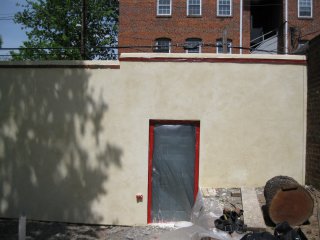
|
Weep screeds
are used at the bottom of the wall
for water drainage and to keep the stucco slightly up from the ground.
The
flange on the screed is covered with a strip of metal lath, ready for
mortar.
|
The garage is finished to match the house. A
band of brick is left exposed for a decorative effect.
|
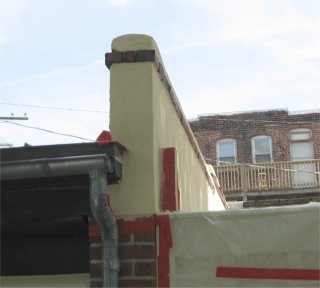
|
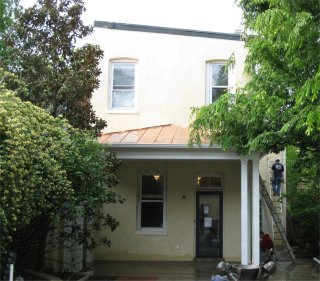
|
A side view of the parapet on the garage shows
how we rounded the top for good water run-off.
|
Nice, huh? We really enjoyed working on this Richmond, Virginia stucco house. I
hope to
come back down here soon.
|













